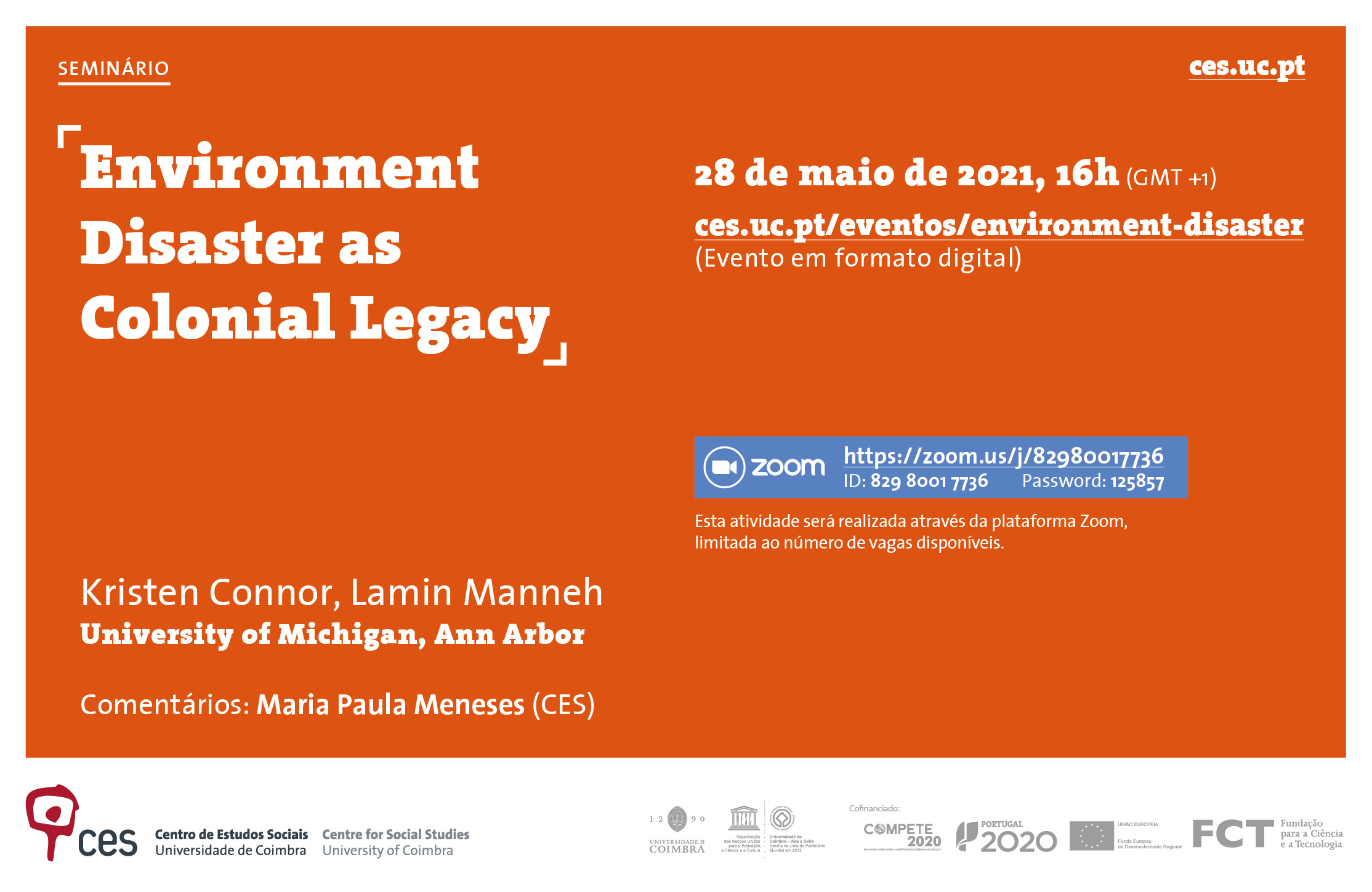Seminar
Environment Disaster as Colonial Legacy
Kristen Connor
Lamin Manneh
May 28, 2021, 16h00 (GMT +01:00)
Online
Comentator: Maria Paula Meneses (CES)
Overview
In this seminar, we will consider how colonial legacies are an overlooked factor in the analysis and understanding of environmental disasters. Drawing on two case studies from urban West and East Africa, we will discuss how histories of colonial settlement, urban planning, and segregation are three dimensions of colonialism that shape how environmental disasters are experienced, both in the past as well as today.
Should sea levels rise one meter, the entirety of the capital of Gambia, Banjul (formerly Bathurst), will be submerged. Founded in 1816, colonial officials thought that Bathurst’s position at the mouth of the Gambia River made it the most suitable place for exporting resources despite their knowledge of constant flooding on the island. European merchants’ profits overrode this concern, as well as their securing of two high mounds in Bathurst where they built their homes. Segregated from most African residents who lived at the edge of the mangrove forest, these seasonal merchants were rarely affected by flooding.
Similarly, high in the Rwenzori Mountains of western Uganda, Anglo corporations backed by the British colonial government built a mining settlement in the Nyamwamba River valley in the 1950s. White people built their homes on the hillsides, safe from the Nyamwamba’s reach. By contrast, Katiri Town--home to the mine’s African workers and their families--was built in the path of the diverted river. Maintained through intense infrastructural investment, when the mine closed in the 1980s this work slowly ground to a halt. In the past decade, severe and recurring annual flooding has taken the homes and lives of many people in Katiri Town, sparing the new African elites who occupy the old white neighborhood.
In addition to the three dimensions of urban colonial history of settlement, urban planning, and segregation, materiality is a key theme that binds these histories. Prior to colonial rule, both the island that became Bathurst and the area that became Kilembe were home to relatively small communities of people who had carved a living in difficult environments. The large-scale material transformation of these places to suit white Europeans was used to justify colonialism (as “development”), at the same time that it was executed along segregated lines based on racist ideas about Africans’ material needs and ways of living. With long afterlives, we hope to explore how the continued effects of materials and their emplacement shape environmental harm and risk in the context of a changing climate.
Bio notes
Kristen Connor: PhD candidate in the Department of Anthro-History at the University of Michigan, Ann Arbor. Her dissertation research examines the interconnected histories of science, environmental, labor and colonialism in Western Uganda.
Lamin Manneh: PhD candidate in the Department of History at the University of Michigan, Ann Arbor. He works on histories of colonial citizenship and belonging and their relationship to urban development and urban ecologies during British colonial in the Gambia
________________________________
will be provided through Zoom platform and doesn’t require registration. It’s limited to the number of places available.
https://us02web.zoom.us/j/82980017736?pwd=OTRLZzk1RFFEODdTdzZCVFBwRVRHUT09
ID da reunião: 829 8001 7736 | Senha de acesso: 125857
Please keep the microphone on mute until the discussion is open. The host may remove disruptive participants.
Open activities in digital format, such as this one, do not grant a declaration of participation. Such document will only be guaranteed in events with prior registration and regulated access.


